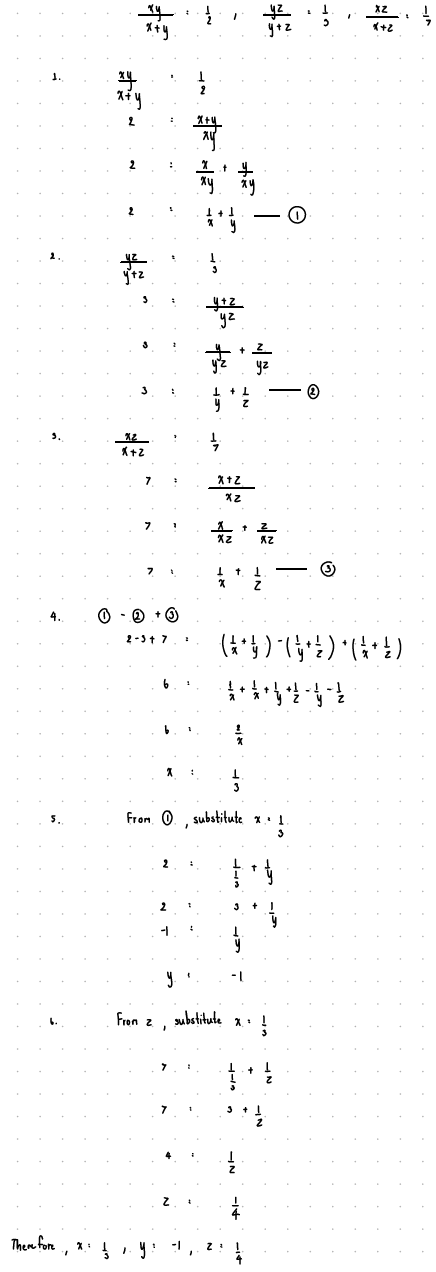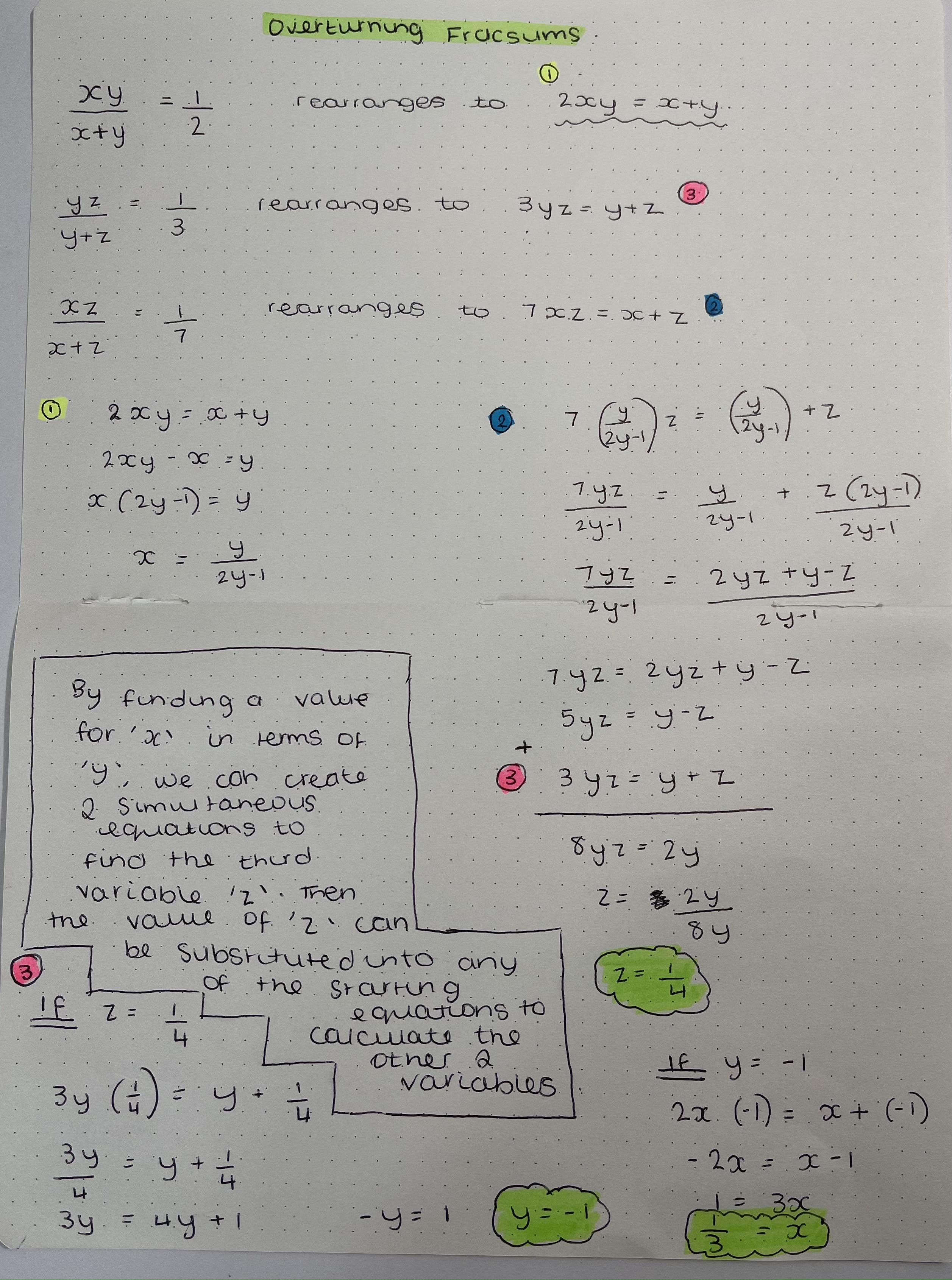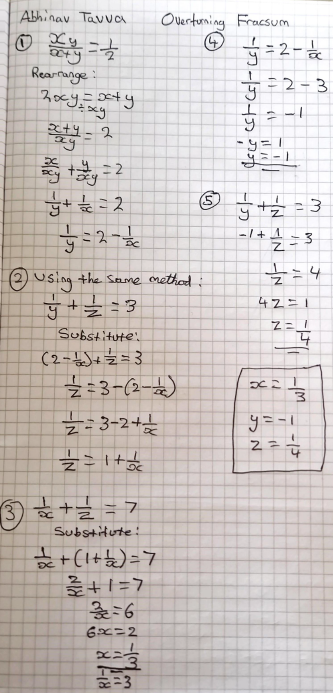Copyright © University of Cambridge. All rights reserved.
'Overturning Fracsum' printed from https://nrich.maths.org/
Show menu
Well done to Nishad from Thomas Estley Community College, Jettarin from Stephen Perse Foundation, Abhinav from St. Olaves Grammar School, Yuk-Chiu from Harrow School and Deeya from the UK and Kesav, who all sent in full and correct solutions to this problem.
Nishad and Kesav sent in very similar solutions that involved first rearranging the equations, and then solving by elimination. Click to see Nishad's work.
$$\frac{xy}{x+y}=\frac{1}{2} \Rightarrow \frac{x+y}{xy}=2$$
We can split that LHS to get
$$\frac{1}{x} + \frac{1}{y} = 2$$
Similarly
$$\frac{1}{y} + \frac{1}{z} = 3$$
$$\frac{1}{x} + \frac{1}{z} = 7$$
Subtracting the first equation from the second equation gives
$$\frac{1}{z} - \frac{1}{x} = 1$$
Then adding this to the last equation gives
$$\frac{2}{z} = 8 \Rightarrow \frac{1}{z} = 4 \Rightarrow z =
\frac{1}{4}$$
Hence
$$\frac{1}{x} + 4 = 7 \Rightarrow \frac{1}{x} = 3 \Rightarrow x =
\frac{1}{3}$$
And finally
$$\frac{1}{y} = -1 \Rightarrow y = -1$$
We can split that LHS to get
$$\frac{1}{x} + \frac{1}{y} = 2$$
Similarly
$$\frac{1}{y} + \frac{1}{z} = 3$$
$$\frac{1}{x} + \frac{1}{z} = 7$$
Subtracting the first equation from the second equation gives
$$\frac{1}{z} - \frac{1}{x} = 1$$
Then adding this to the last equation gives
$$\frac{2}{z} = 8 \Rightarrow \frac{1}{z} = 4 \Rightarrow z =
\frac{1}{4}$$
Hence
$$\frac{1}{x} + 4 = 7 \Rightarrow \frac{1}{x} = 3 \Rightarrow x =
\frac{1}{3}$$
And finally
$$\frac{1}{y} = -1 \Rightarrow y = -1$$
Jettarin and Yuk-Chiu began in a very similar way, but combined the equations very neatly at the end. This is Jettarin's work (click to enlarge).
Deeya solved the equations by using substitution:
Abhinav also used substitution, but in a different form (click to enlarge):


